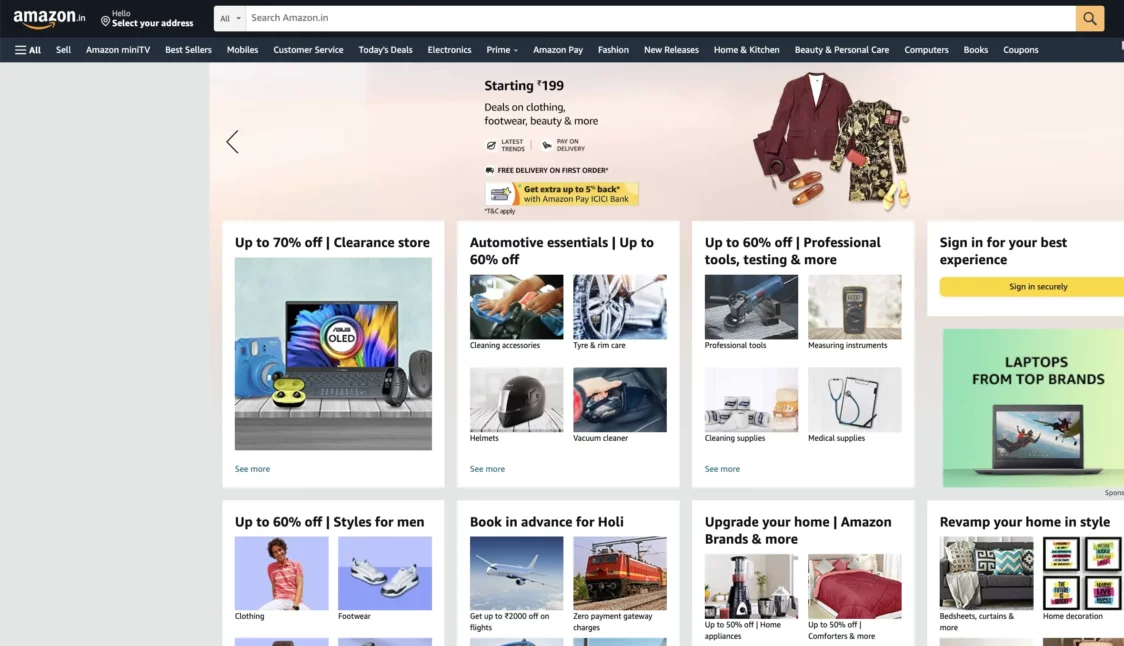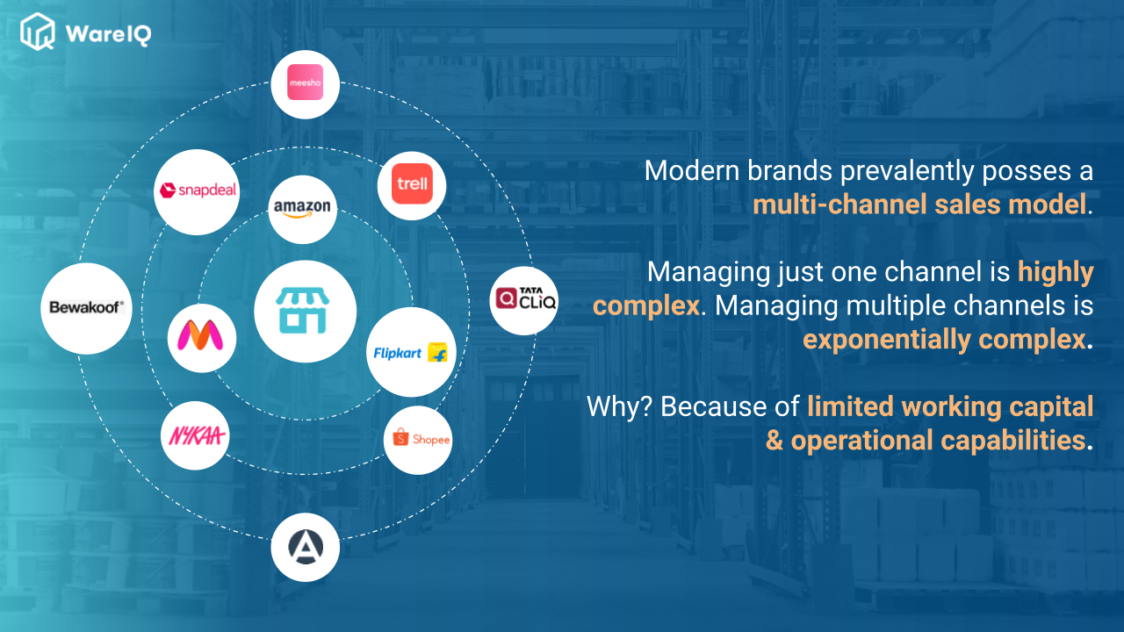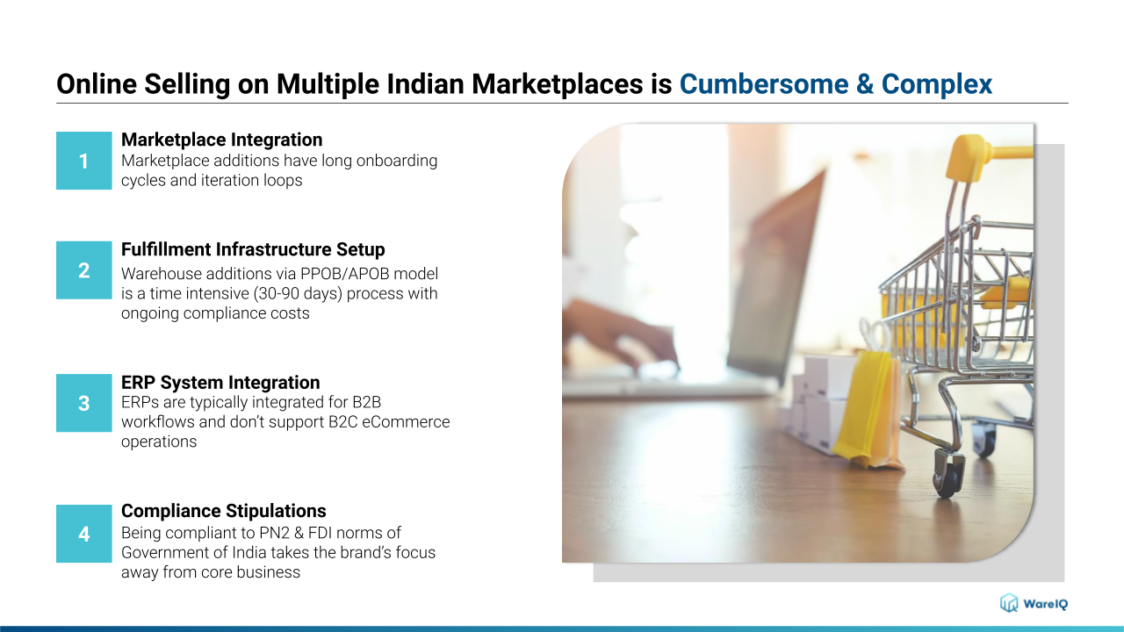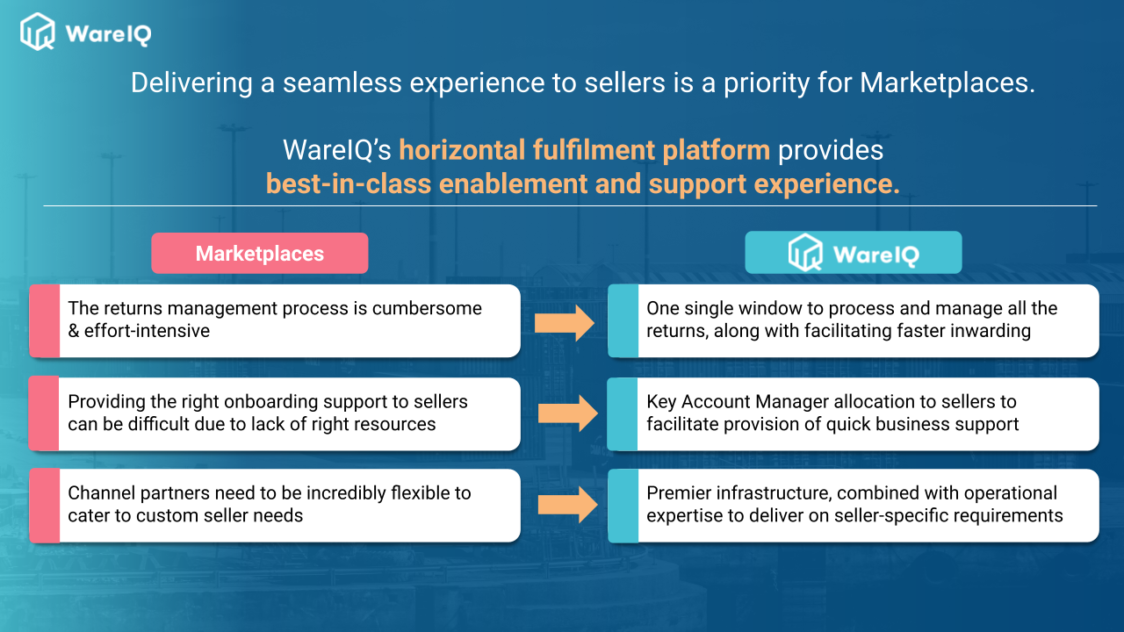Multi-Channel Selling: How to Use Multi-Channel Retailing to Boost Sales Across Online Marketplaces in 2024?
In this day and age, making sure your product is visible and readily available to a wide audience is just as or even more important than ensuring you have a competitive product in the first place. With the sheer number of resellers, listing platforms, and media outlets to promote products on, it is easy for even an ultra-competitive product that is targeted at the right audience to fall through the cracks. That is where multi-channel selling comes into play. It is a means of ensuring that your product is available on every single type of platform that it could be listed on.
This helps increase the visibility of your product and there are more chances that your potential customer will identify and eventually purchase your product through one of the many eCommerce multi channel selling platforms that it is listed on. Read more to find out how multi-channel selling can help your business.
- 5 Different Platforms Utilised for eCommerce Multi-Channel Selling
- What are the Advantages of Multichannel Selling?
- What are the Disadvantages of Multi-Channel Selling?
- 5 Main Challenges Associated with Multi-Channel Selling for eCommerce in 2024
- What are the Different Strategies for Multi-Channel Selling in 2024 that Online Businesses can Implement?
- What Types of Businesses is Multi-Channel Selling For?
- Why Should You Choose WareIQ as a 3PL Fulfillment Partner if You Are a Multi-Channel Online Seller?
- eCommerce Multi Channel Selling FAQs (Frequently Asked Questions)
What is eCommerce Multi Channel Selling?
Multi-Channel Selling is a way of selling products on multiple sales channels. A seller can sell products/services from its e-commerce website as well as any online marketplace, social handles, or/and from its physical brick-and-mortar stores.
In the past, multichannel selling was limited to in-store experiences, catalogs, and sales over the phone or via email. Customers can shop and buy through whichever channel they like with multi-channel selling. A manufacturer selling to a few wholesalers, for example, might have sent them a catalog. Wholesalers would then need to contact the manufacturer and place an order over the phone or via email. This is a lengthy process that involves a lot of paperwork and is prone to errors and misunderstandings!
Today in multichannel selling, sellers are able to attract visitors in bulk to their site and convert a substantial fraction of that traffic into paying clients with effective marketing efforts and a well-designed website.
But why limit the business to a single website? There are numerous alternative sales channels (Amazon, Flipkart, Meesho, etc.) via which a seller can attract new consumers and increase revenue for their business. To build a brick-and-mortar business, sellers would have to spend a significant amount of time and money finding new locations, hiring new personnel, and so on. However, moving into new territory online is a lot easier and less expensive.
WareIQ, an eCommerce fulfillment company, empowers online brands with a superior-tech platform to compete with Amazon like service levels by bringing their average delivery timelines from 5-10 days to 1-2 days.
5 Different Platforms Utilised for eCommerce Multi-Channel Selling
There are various platforms utilised for eCommerce multi-channel Selling. Majorly, it has been bifurcated into five categories. These are as follows:
- Seller’s website
- Online marketplaces
- Social media platforms
- Third-party websites
- Bricks and mortar
Seller’s website

In the era of the internet, a website is an important asset of multi-channel retailing and acts as a virtual shop where a buyer can find a catalog of product categories with all the exclusive details having a buying option for it. There are few companies that start their business as D2C brands where they sell via their own website. A few examples of such companies in India are mCaffeine, BOAT lifestyle, open secret etc.
Online marketplaces

In recent years, online marketplaces have been dominating the market with the highest market share of sales. Amazon, India’s biggest online retailer claims to have 85 million unique monthly visitors (according to big commerce) followed by Meesho and Jio mart. It is a very important outlet for multi-channel retailing
Advantages of an online marketplace in multi-channel selling include:
- Huge customer base
- Easily accessible
- Easy checkout
- New consumers who may purchase again
- Fulfillment process for retailers and customers
Disadvantages of an online marketplace in multi-channel selling include:
- Marketplace fees (which can vary by category)
- Restrictions on branding one’s business
- Cut-throat competition, leading to minimum margins
- Inability to record customers’ information
Marketplaces are further divided into three main categories when grouped by their target audience:
- Business-to-business (B2B)
- Business-to-customer (B2C), and
- Peer-to-peer (P2P), or customer-to-customer (C2C)
Suggested Read: Sell on Flipkart, Sell on Myntra, Sell on Etsy
Social media platforms

Websites and e-commerce platforms are not easily accessible for small businesses, so these businesses show up their online presence and sell their product using social media platforms. It helps all businesses to increase customer retention by posting and tagging directly to the clients.
Third-party websites

This is usually utilized for electronic and luxury products like mobiles, smart watches, washing machines, etc. Here, people come to see features and compare them with similar products of different brands in a certain price range. After comparison, there is a buying option for the customer.
Bricks & Mortar
It is the conventional method of buying and selling products. Customers go to stores and buy products. With the changing time, the working style of these stores has changed. Many big players have emerged in this business model. They keep almost everything under a roof at a very marginal rate.
What are the Advantages of Multichannel Selling?
All selling options have pros and cons. Adding all these channels to the multi-channel selling options adds a bunch of pros and scales down the cons. It increases availability with 24*7 options for a customer. To get more insight the benefits have been listed below.
Increases Presence
If a seller opts to be on multiple channels then the presence of his brand(products) will increase with the number of channels. E-tailor will get more customer presence for their listed product.
More Focus on Target Customers/Markets
You must have heard this marketing mantra; sell the right thing, at the right time, to the right person. The explanation of this mantra comes with the question, how is it done?
Multi-channel options enable a seller to select an audience mainly through online selling. Here, the seller can filter the market based on their psychographic and demographic profile. Sellers have the ease of choosing their niche market and targeting them with the right strategy.
Improves inventory transparency
As a seller or manufacturer, here they get the exact count of products they have in their inventory. With the help of an AI and IoT seller, the manufacturer or any person in charge of it is informed regarding the inventory, orders, sales graph, shipment tracing, the life of products, etc., etc.
Improved Customer Perception
Generally, a person perceives what he sees. The transparency of reading customer reviews on products, delivery, packing, or any related pre and after-sales service helps the customers to choose the right product offered by a good seller. This has changed the perception of the online shopping experience for most of the general public.
Gather Insightful Data
In the coming years, data will rule the market. The primary difference between an old seller/shopkeeper and a new one is, that the old shops have more contacts, it’s a name known by a bunch of people due to which they have much footfall in their shop.
If a seller has data on the masses, what they are looking for, where they live and their ability to buy this will help a seller to target the group of needy.
Improves Conversion Rate
If we have the data of someone who is already looking for a similar product then of course it will be easy to sell him, instead of selling the product to those who may or may not want to buy it. Here we have options of easy conversion by targeting the right person which leads to a high conversion rate.
What are the Disadvantages of Multi-Channel Selling?
When we talk about the disadvantages of multi-channel selling. Many of the disadvantages of a single channel are covered by other selling channel options. Although being in a competitive market a seller will have disadvantages. A few of the major disadvantages are:
Complex logistics
In multi-channel selling options, most of the channels are online where the buyer looks for delivery at his/her doorstep before any transaction of money. Most of the time the seller is ready to dispatch the product but the problem is in logistics. A seller who is engaged in selling products can barely give enough time to packing, shipping, tracking, and all logistics-related steps. In multi-channel online selling, buyers are beyond the seller’s reach so logistics is the biggest disadvantage.
A platform which has a good logistic facility is said to be a better platform for sellers as well as buyers.
Competitive Pricing
In a huge marketplace where there are millions of sellers and billions of buyers, the pricing of the product matters a lot. Here the buyer chooses and the seller loses, if there is a small difference in the price of the same product by different sellers.
Return and refund
After doing everything to sell the product through multiple channels like listing products, choosing a logistic partner, and dispatching articles before getting paid, if the customer returns the product without any reason then a seller feels it is the biggest disadvantage of online selling which also applies to multi-channel sales.

5 Main Challenges Associated with Multi-Channel Selling for eCommerce in 2024
Doing business is a tough task. Sellers have a lot of challenges to face which are part of their business practice. A few of them are:
Product Information and Listings Management
To sell a product, sellers need to make the buyer aware of what the seller is selling, what are the benefits of the product, and the advantages of buying from them. To sell they need to show.
Inventory Management
An eCommerce multi-channel seller who works with the idea of selling in quantity with fewer margins needs to maintain a good amount of inventory. They get orders from many platforms and to fulfill that demand they need a high volume of the listed product and/or keep the inventory maintained as per the demand ratio otherwise if they are short of product they will fail to deliver it on time or may not deliver after taking the order which will impact on seller reviews.
Cross-Channel Messaging
Only making a presence on the platform does not give a seller active buyers. They also need to be active and keep in touch with them through messaging, tagging, and replying to their queries.
Order Fulfilment and Returns
Order fulfilment and product returns can consume a lot of time and add complexity when sellers sell on several channels. Establishing a flexible, dependable, and scalable fulfillment plan that does not eat into profit margins is a more crucial and demanding task than most sellers realise. Gathering order fulfilment and return concerns in one place, together with a channel-specific view, will aid in identifying and addressing the bottlenecks that eCommerce sellers frequently face.
Data Management and Analytics
As the number of channels grows, the volume of data coming in and the number of data sources that e-seller must handle will become overwhelming. It’s more likely to result in the seller losing out on the big picture. These data silos must be broken down, and business intelligence must be integrated into a single display. It helps them get a big picture of the business and derive actionable insights from the data.
What are the Different Strategies for Multi-Channel Selling in 2024 that Online Businesses can Implement?
Before making any strategy, a seller needs to know about multi-channel selling inside-out. The knowledge needed to be gained by each seller is different, according to their product and business model. So first we need to define channel as per offerings and availability
There are three models of selling:
- Business-to-business (B2B)
- Business-to-customer (B2C), and
- Peer-to-peer (P2P), or customer-to-customer (C2C).
So for each type of business, a seller will have to choose different channels according to their end-user. Like a product offered on Amazon business can not be sold on Amazon, a seller can not list a product on BigBasket and cannot list or sell on Shopify as well, and gain equal attention. They all are sales channels for use for different purposes so customers should choose wisely and customise the product features smartly.
Build a Multi-Channel Marketing Plan
Before a seller makes an account and lists the product on multiple platforms, they need to make a plan. Will they need a customer support team, a person taking care of the logistics, accounts, etc? These days sellers have options that are helpful in full-stack logistics but here also they need to get partners with them.
Use a CRM Software to Target Prospects
Multi-channel e-commerce marketing is only as good as the technology that powers it. A seller can send content on several channels every day for as long as they like. They may lose sales if they do not keep up with their targets as they bounce through various channels.
Rather than saturating each channel with content at random, target people who come into contact with the offered product. Customer relationship management (CRM) software can help sellers to do this.
CRMs allow sellers to keep track of all of a customer’s interactions with their company. They can choose one that connects to all of their channels to ensure that no contact goes unnoticed. When a client reacts on a channel, the CRM creates a user profile for them right away. With each engagement, that profile is regularly modified.
This allows a seller to see how a consumer moves across their channels and identifies trigger events that may indicate what that person is looking for. Conversion pathways that function better with that profile are also visible. The seller would be able to figure out when, where, and how each consumer wishes to be contacted if those channels are followed. Optimise the channels and implement target marketing based on this data to increase sales conversion.
CRMs can also assist sellers in identifying loyal consumers who have been with them for a long time. They can give rewards to them. As a result of word-of-mouth, they will attract additional clients.
What Types of Businesses is Multi-Channel Selling For?
In this day and age, all businesses should have multiple channel selling options. It gives equal opportunity to businesses regardless of their size, reach, brand, non-brand, urban location, rural location, etc. The things that matter here are quality of product/service, availability, reviews by other customers, quick delivery and return policy.
The only thing that a business should think about and plan before going on a certain selling channel is whether; is the platform right for their target market. A machine lubrication oil manufacturer should not list and sell its offerings on Amazon or eBay and a pair of shoes will rarely get any customers on IndiaMart. Choose the channel sensibly, list the product and describe it smartly and choose a delivery partner wisely.
Why Should You Choose WareIQ as a 3PL Fulfillment Partner if You Are a Multi-Channel Online Seller?
Different stages of the buyer’s journey are targeted via social media, comparison shopping engines, marketplaces, and a seller’s website.
The ultimate goal of a seller is to make more sales regardless of any platform or location. At the end of the day, any seller will want more transactions, rotation of products in inventory, and popularity which all are fulfilled here. A seller will be able to maximise their reach and broaden the breadth of the company’s capabilities by having a presence on each of these retail channels. If they do it right, customers will keep coming back for more, no matter where they are in their journey.

eCommerce Multi channel commerce is a crucial strategy for success in today’s connected world, but it comes with its own set of problems and opportunities. Online selling on multiple online marketplaces in India is cumbersome & complex due to the following reasons:
- Marketplace Integration: Marketplace additions have long onboarding cycles and iteration loops
- Fulfillment Infrastructure Setup: Warehouse additions via PPOB/APOB model is a time-intensive (30-90 days) process with ongoing compliance costs
- ERP System Integration: ERPs are typically integrated for B2B workflows and don’t support B2C eCommerce operations
- Compliance Stipulations: Being compliant with PN2 & FDI norms of the Government of India takes the brand’s focus away from core online business
You can streamline your entire shipping operations in one place with WareIQ.
Established in 2019, WareIQ, a Y-combinator-backed startup, has rapidly grown to be the leading provider of full-stack eCommerce fulfillment services for some of the most reputed brands in India. WareIQ offers a full-stack platform for eCommerce companies to enable same-day delivery and next-day delivery to customers – an Amazon Prime-like experience but accessible to everyone.
Integrate with multiple marketplaces & pan-India fulfillment network from Day 1 through WareIQ’s Seller on Record model & go live on-demand on multiple marketplaces with premium-tier access, simplified operations & zero compliance risks to accelerate your revenues.
- Leverage our existing listings on multiple marketplaces & go-live on-demand
- Kickstart your B2C operations with a simple B2B stock transfer to WareIQ
- Simple & easy financial payments & reconciliations through our virtual inventory model
- Creating cost & process efficiencies through centralized taxation & compliances

WareIQ’s analytics-enabled technology platform functions as the central command center for all your logistics operations. Order management, inventory management, warehouse management & shipping management – all are possible through WareIQ’s fulfillment platform.
- Pan India Fulfillment & Darkstore Network: Plug-and-play fulfillment infrastructure with no minimums, which is compliant with Amazon Seller Flex, Flipkart Assured, Myntra and other marketplaces
- Inventory & Network Planning Excellence: Best-in-class AI models for sales forecasting, product segmentation, and inventory management to reduce inventory by 40% and increase revenue by 10%.
- Vertically Integrated Fulfillment Tech Stack: Our Fulfillment Tech Solution supports integrations with 20+ top marketplaces & D2C platforms, and prominent national, regional and hyperlocal couriers, enhancing reach by covering deliveries for 27,000+ pin codes
- Supply Chain Productivity Applications: Integrate a host of supply chain productivity apps with a single-click to your existing CRMs, ERPs & accounting software to manage your logistics workflows from one command center. Use Apps like RTO Shield to get 100% RTO protection, Branded Tracking to turn your order tracking page into a profitable marketing channel, and many more.
Trusted by 300+ top Indian brands, we are helping them accelerate online sales and expedite their growth through a synergistic combination of advanced technology, robust fulfillment infrastructure & seller enablement services!WareIQ is backed by leading global investors including Y Combinator, Funders Club, Flexport, Pioneer Fund, Soma Capital, and Emles Venture Partner.









